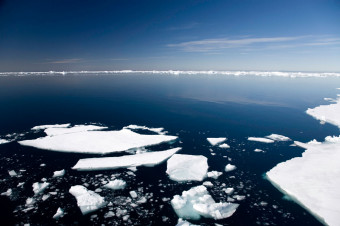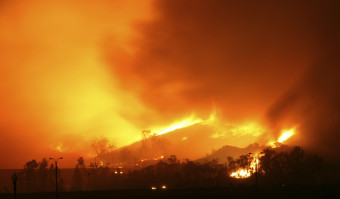Climate change is having significant impacts on economies, human health and well-being, ecosystems and biodiversity, with further widespread challenges expected over the coming decades. The Sixth Assessment Report of the Intergovernmental Panel on Climate Change (published in 2022) highlights a number of recorded impacts and trends in wildlife and ecosystems resulting from climate change at the global level, and highlighted the potential future impacts that may occur under a range of greenhouse gas emissions scenarios. The report also recognised that many of the potential impacts which climate change may have upon human health, economies and society, are likely to occur as a result or knock-on effect of impacts on biodiversity and ecosystems.
Some health implications of climate change impacts on biodiversity | |
Health impact | Link with biodiversity |
Disaster risk | Climate change is increasing the frequency and severity of natural events such as floods, landslides, droughts, heat waves, fire and storms. Where critical and fragile ecosystems are impacted by changes in weather patterns, or already damaged by human activity, communities are likely to be at greater risk. |
Food and nutritional insecurity, non-communicable disease | Increased risks of species extinction, as well as drought, storms, floods and landslides, may affect essential food resources and the health of agricultural systems. This could lead to failures of harvests, loss of livelihoods, malnutrition and famine, with subsequent increased risks on non-communicable disease. Climate change is also disrupting ocean and aquatic ecosystems, affecting fishery resources that are already heavily impacted by overharvesting or pollution. Some communities have strong cultural associations with migratory species, which they may rely on for food or trade, and which may be significantly affected by climate change. |
Increased infectious disease risk | Impacts on ecosystem structure and function are changing the ecology of infectious disease organisms, and altering patterns of distribution of pathogens or their vectors, including changes in migratory behaviour. In future, some pathogens or vectors may become more abundant as a direct result of shifts in seasonal weather patterns, while other species which are normally non-pathogenic may shift their ecological niches and cause diseases in plants, animals or humans. People, livestock, crops and wild species may also become more vulnerable to infection if they are subjected to heat stress, or water or nutritional deficiencies. |
By sustaining and enhancing ecosystem goods and services which support communities and economies and regulate environmental and health risks, biodiversity conservation is a critical part of the process of adapting to climate change. However, there is still a great deal of uncertainty as to how biodiversity itself will be affected. It is clear that the scale and pace of climate change will be too great for many species to cope with, and local, regional and global extinctions may occur. A particular concern is the impact which climate change will have on diseases of wildlife, which may lead to additional human health risks. While protected areas will form the frontline of conservation in some areas, the likelihood that species (including disease organisms or their vectors) will migrate in response to change will pose significant challenges. It will not be possible or practical to protect everything – so difficult choices will have to be made in order to ensure that critical ecosystem services, including those essential to health, are sustained. Such decision-making processes need to involve many different disciplines and levels of society, with particular focus on the needs of communities.


